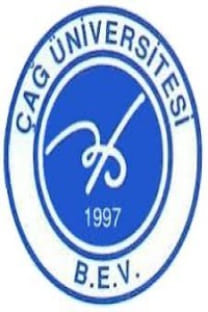Is Sales Growth Associated with Market, Size and Value Factors in Returns? Evidence from Athens Stock Exchange
Sales growth, market, value factors in returns
___
Banz, Rolf W. 1981. “The Relationship Between Return and Market Value of Common Stocks ”Journal of Financial Economics. 9:1, pp. 3-18.Basu, Sanjay. 1977. “Investment Performance of Common Stocks in Relation to Their Price-Earnings Ratios: A Test of the Efficient Market Hypothesis.” Journal of Finance. 12:3,pp. 129-56.
Bhandari, Laxmi Chand. 1988. “Debt/Equity Ratio and Expected Common Stock Returns: Empirical Evidence.” Journal of Finance. 43:2, pp. 507-28.
Blume, Marshall and Irwin Friend. 1973. “A New Look at the Capital Asset Pricing Model. ” Journal of Finance. 28:1, pp. 19-33.
Chan, Louis K.C., Yasushi Hamao and Josef Lakonishok. 1991. “Fundamentals and Stock Returns in Japan.” Journal of Finance. 46:5, pp. 1739-1789.
Chen, N., R. Roll, and S. A. Ross 1986. Economic forces and the stock market. Journal of Business 59: 383-403.
Fama, Eugene F. 1996. “Multifactor Portfolio Efficiency and Multifactor Asset Pricing.” Journal of Financial and Quantitative Analysis. 31:4, pp. 441-465.
Fama, Eugene F. and Kenneth R. French. 1992. “The Cross-Section of Expected Stock Returns.”Journal of Finance. 47:2, pp. 427-465.
Fama, Eugene F. and Kenneth R. French. 1993. “Common Risk Factors in the Returns on Stocks and Bonds.” Journal of Financial Economics. 33:1, pp. 3-56.
Fama, Eugene F. and Kenneth R. French. 1995. “Size and Book-to-Market Factors in Earnings and Returns.” Journal of Finance. 50:1, pp. 131- 155.
Fama, Eugene F. and Kenneth R. French. 1996. “Multifactor Explanations of Asset Pricing Anomalies.” Journal of Finance. 51:1, pp. 55-84.
Fama, Eugene F. and Kenneth R. French. 1997. “Industry Costs of Equity.” Journal of Financial Economics. 43:2 pp. 153-193.
Fama, Eugene F. and Kenneth R. French. 1998. “Value versus Growth: The International Evidence.” Journal of Finance. 53:6, pp. 1975-1999.
Jagannathan, R. and McGratten, E. R. 1995. The CAPM Debate. Quarterly Review of the Federal Reserve Bank of Minneapolis 19: 2-17.
Jagannathan, R. and Wang, Z. 1996. The conditional CAPM and the cross- section of expected returns. Journal of Finance 51: 3-53.
Jegadeesh, Narasimhan and Sheridan Titman. 1993. “Returns to Buying Winners and Selling Losers: Implications for Stock Market Efficiency.” Journal of Finance. 48:1, pp. 65-91.
Kothari, S. P., Jay Shanken, and Richard G. Sloan. 1995. “Another Look at the Cross-Section of Expected Stock Returns.” Journal of Finance. 50:1, pp. 185-224.
Lakonishok, Josef, Andrei Shleifer and Robert W. Vishny. 1994. “Contrarian Investment, Extrapolation, and Risk.” Journal of Finance. 49:5, pp. 1541-1578.
Reinganum, Marc R. 1981. “A New Empirical Perspective on the CAPM.” Journal of Financial Quantitative Analysis. 16:4, pp. 439-462.
Stattman, Dennis. 1980. “Book Values and Stock Returns.” The Chicago MBA: A Journal of Selected Papers. 4, pp.25-45.
- ISSN: 1304-8392
- Yayın Aralığı: Yılda 2 Sayı
- Başlangıç: 2004
- Yayıncı: Çağ Üniversitesi
Grigoris MİCHAİLİDİS, Stavros TSOPOGLOU, Demetrios PAPANASTASİOU, Mete FERİDUN
BARIŞ SÜRECİNDE DÜŞÜNSEL DÖNÜŞÜM VE BARIŞ EĞİTİMİNİN ROLÜ
STRENGTHS OF THE COUNCIL OF EUROPE’S HUMAN RIGHTS PROTECTION MECHANISM: THE CONVENTION AND THE COURT
PARASAL HEDEFLEME STRATEJİLERİ VE TÜRKİYE’DE FİYAT İSTİKRARI
BARIŞ SÜRECİNDE DÜŞÜNSEL DÖNÜŞÜM VE BARIŞ EĞİTİMİNİN ROLÜ
THE FACTORS PERMEATING AFGHAN CONFLICT
Mansoor Akbar KUNDİ, Musarrat JABEEN
PARASAL HEDEFLEME STRATEJİLERİ VE TÜRKİYE’DE FİYAT İSTİKRARI
